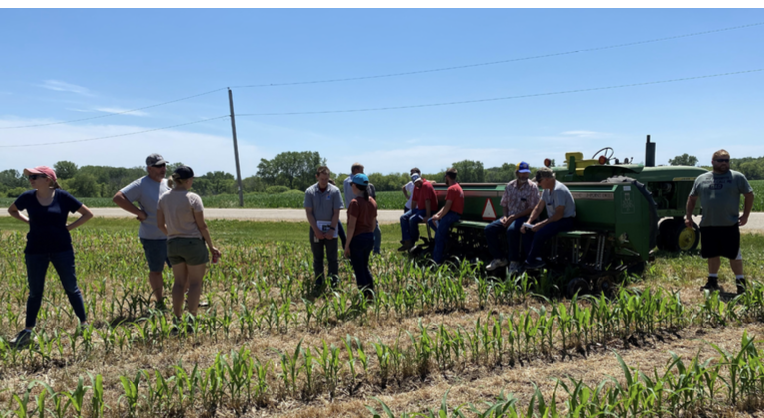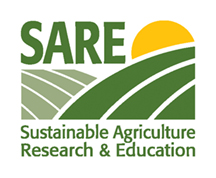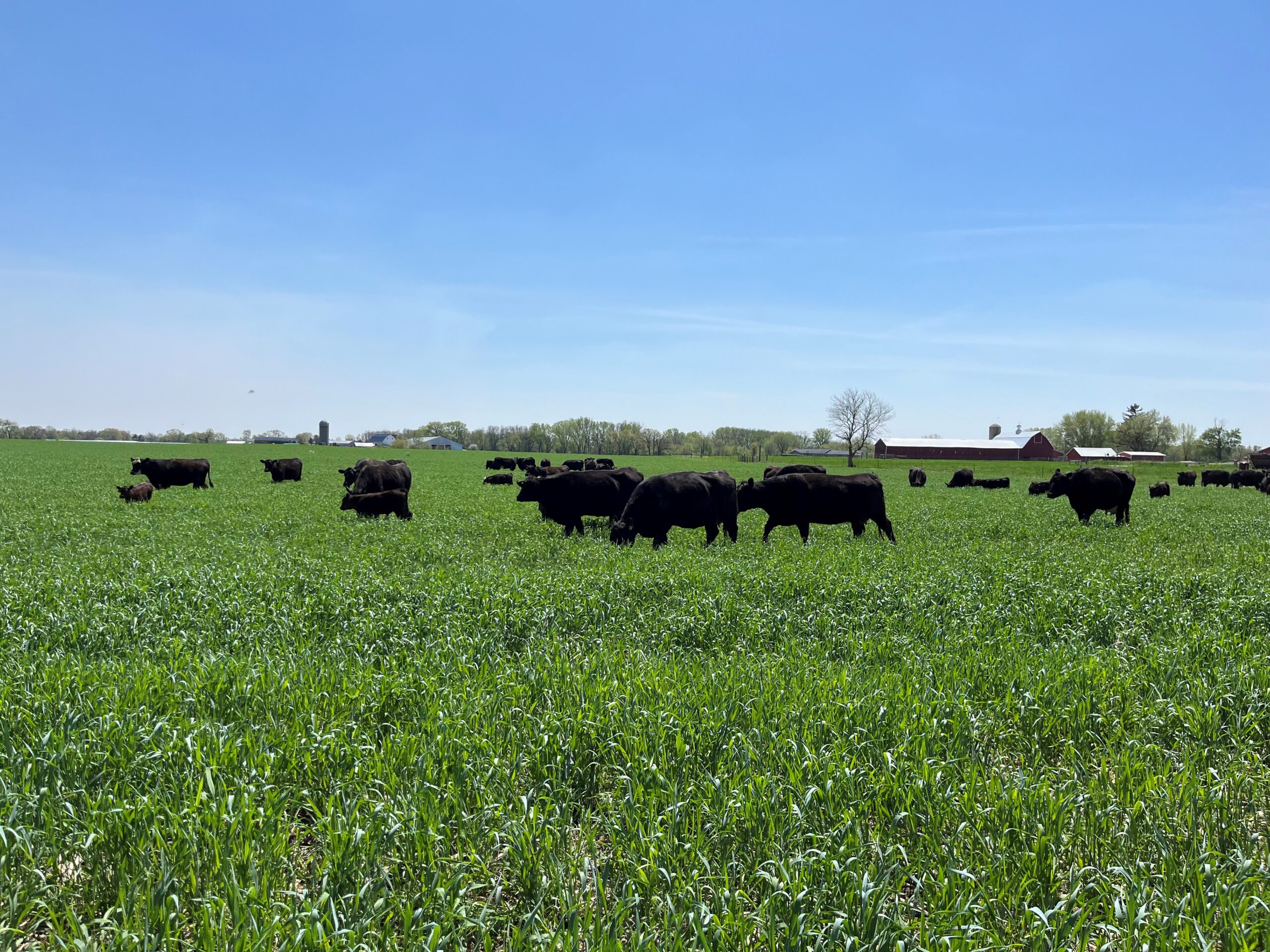
Cattle grazing a cover crop. Credit: Marie Raboin
Peer and community catalysts lead farmers to adopt sustainable agriculture practices and innovation; farmer-led, economically viable conservation efforts work.
As an agency employee over the past 20 years, I have come to realize that science matters in promoting sustainable agriculture, but it is just one small piece of the process. What has a larger, more lasting effect on change is the social support around changing farming practices. I can say with 100% confidence that community affects more change on the landscape than research out of the best land grant university. Yes, farmers need to know that practices work financially and in their environment, but more than that they need to feel confident in the desire to experiment and change. That confidence comes from community support. The most successful farmers have support on several levels within their community—family, friends, and other farmers."
—Marie Raboin, Partnership Grantee
Community Support is Essential for a Farmer's Success and Innovation.
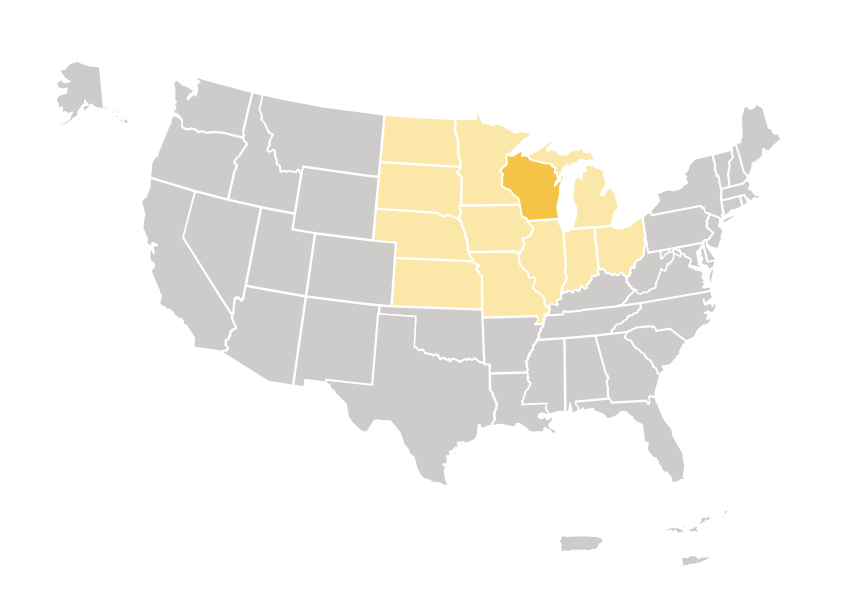
Region: North Central
State: Wisconsin
Grant Type: Partnership
Grant: ONC19-063
SARE POST-PROJECT EVALUATION IMPACT MODEL
This evaluation impact model is specific to this SARE-funded project.
Sustainability Impacts
The project grantees and stakeholders contributed to the following sustainability impacts:
- Environmental sustainability impacts
- Economic sustainability impacts
- Production efficiency impacts
- Social sustainability impacts
Grantee Indicators
(Conservation Specialist)
Project grantees (defined above) achieved sustainability impacts by engaging with the following indicators through involvement with project activities:
- Increased knowledge/skills
- Increased capacity/motivation
- Increased engagement
- Practice change
Stakeholder Indicators
(Farmers)
Project stakeholders (defined above) achieved sustainability impacts by engaging with the following indicators through involvement with project activities:
- Increased knowledge/skills
- Increased capacity/motivation
- Increased engagement
- Practice change
The Success Story
Marie Raboin, Conservation Specialist of Dane County Land Conservation and small business owner, strongly advocates that farmers need to feel support from and inspired by other farmers to increase the likelihood they will adopt new sustainable agriculture practices. Raboin’s implementation of a SARE partnership grant is a model example of this idea in practice. The grant writing and implementation process legitimized Raboin’s approach. Once some farmers adopt new practices, other farmers are pulled towards innovation—sometimes simply from a feeling of not wanting to “miss out” or be the last one in the community to adopt new approaches to farming. Raboin’s SARE project demonstrates that social support and the economic incentives of conservation practices, in this case a reduction in feed costs for cattle, make it more likely for farmers to implement and advocate for sustainable agriculture. The utilization of grazing ground cover crops in the raising of cattle goes a long way in decreasing soil erosion and keeping manure runoff out of waterways, however farmers may be reluctant to spend their hard-won time and resources to adopt new practices simply because there is scientific evidence that they are good for the planet. Farmers need peer and community support and the opportunity to witness first-hand the economic viability and successful results of conservation practices. The SARE funding, combined with Raboin’s astute ability to bring farmers together to share information and experiences, successfully equipped a group of farmer leaders who now are part of a state- wide watershed group leading agricultural-based conservation efforts in Wisconsin.
On-Site Experiential Learning Leads Farmers to Replicate Innovative Practices
All I do is bring them together. And I guarantee you, the farmer will be doing better stuff within a year. It takes another farmer who they respect to fill them in on what they should be doing. ... I joke about FOMO [fear of missing out], but it is real in the farming community.”
—Marie Raboin, Partnership Grantee
Grantee (Conservation Specialist) Highlights
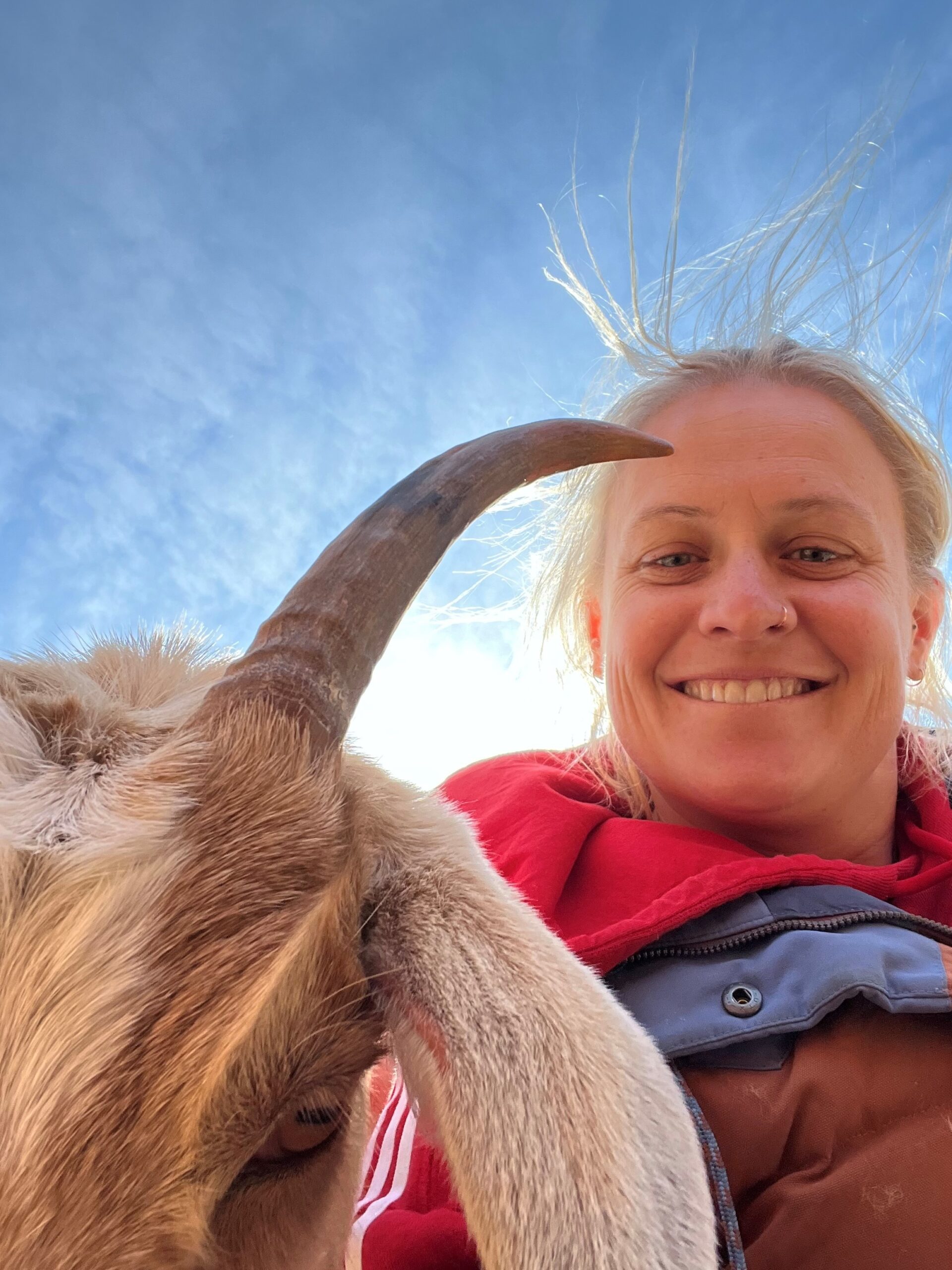
Over the past few decades, the number of traditional gathering
spots like coffee shops and feed stores in rural communities have declined, leaving farmers with less opportunity to exchange valuable insights and gain peer support. The SARE grant enabled Raboin to be proactive in re-creating these lost community spaces by orchestrating connections between innovative conservation-minded farmers and farmers less experienced in sustainable agriculture practices. This unique approach, which Raboin playfully coined farmer “dates,” fostered a sense of community. Raboin utilized the social media platforms YouTube and SnapChat to keep farmers engaged and to share everyday insights from farmers trying out sustainable agriculture practices, often filming in the field, literally, cattle and all. Unlike conventional methods such as distributing fact sheets, Raboin’s project stands out due to her embrace of this more modern, relatable approach that meets farmers where they are. Collaborating with extension partner Chelsea Zegler, Raboin co-created the “Lawn Chair Farming” YouTube channel. It showcases farmers implementing ground cover with livestock and inspiring peers to follow suit.
Recognizing the value of an informal, humorous approach, Raboin tailored her communications to match farmers’ preferences, making conservation methods more accessible. Rather than lead farmer dates with a formal agenda, Raboin had farmers lead and define meeting topics and direction. Raboin motivated less experienced farmers to try something new by building rapport and a strong foundation of community, thereby fostering a culture of innovation in Wisconsin.
Raboin is already integrating the insights gained from her SARE grant into new projects focusing on alternative cover cropping systems. Her impactful research and knowledge have inspired other entities, such as the Sand County Foundation, which received a SARE Research and Education grant (LNC20-440) that drew upon findings from Raboin’s pilot, showcasing the widespread impact of her work.
SARE Increases Legitimacy and Compensates Farmers for their Expertise
SARE legitimized the work I was already doing, but it gave me that flexibility to really pay people for their time. ... I’m so sensitive to the fact that each farm is a small business and conservation is not the thing they think about all day, even though it’s the thing I think about all day. ... You figure out a way to make it fun for them, make it exciting, put a little bit of social pressure on them. And then also compensate ... for the fact that they’re leaders in that community.”
—Marie Raboin, Partnership Grantee
Other Stakeholder (Farmers) Highlights
The SARE grant played a crucial role in compensating farmers for their time and expertise in demonstrating innovative conservation practices on their farms. Raboin noted that it is rare to find funding sources like SARE that allow direct compensation to the farmer. Compensation not only recognized farmer contributions, but also bolstered their leadership skills and confidence in experimenting with new farming practices. Raboin’s skillful facilitation of practice-sharing among farmers during the SARE grant term led to the creation of a successful farmer-led, state-funded watershed group boasting 25+ members, who call themselves “Biological Farmer Friends” (BFFs.)
In the past year, the BFF network expanded its impact by sharing experiences with other watershed groups and formally collaborating with a university research lab to explore specific cover crop mixes throughout the state. Beyond sharing ground cover grazing practices, connected farmers now enjoy socializing with one another, building trust to share equipment and attend conferences together. The BFFs are now recognized as statewide conservation leaders. The group was selected to receive a visit from the head of the USDA’s Farm Service Agency to discuss their experiences as farmers and have hosted press conferences on their farms to showcase conservation work. These examples affirm the enduring impacts of farmer collaboration.
During the grant term, the benefits to farmers extended beyond knowledge acquisition, with on-site learning opportunities enhancing farmers’ confidence and capacity to convey and share conservation practices. Participating farmers went on to host press conferences and lead conference panels on cover crops in grazing. Additional field days on participant farms focused on interseeding cover crops into standing corn for late-season grazing, with support from Dr. Erin Silvas’ lab at the University of Wisconsin Madison. These trials were replicated on 20 other farms and the results were shared in community presentations. Notably, by the end of Raboin’s SARE grant, all 15 participating farmers had adopted new practices around the implementation of cover crop grazing, showcasing the positive ripple effect of this collaborative effort.
Farmers in the Biological Farmer Friends Network Lead Conservation Efforts in Wisconsin
Some of the guys I work with are definitely furthest along in some of these conservation practices in the state. Two of them are going to speak at a statewide conference in a month—we’re still kind of the best ones at this stuff. Every year, the guys I work with keep pushing with new things and how to improve their systems so they continually get tapped by other organizations to be leaders in this topic.”
—Marie Raboin, Partnership Grantee
Sustainability Impacts
Environmental and economic sustainability are inextricably linked in farming. For conservation efforts in sustainable agriculture to be successful, they need to be not only good for the planet, but also result in increased profitability for farmers, according to Raboin. Cover crops are a great example. Because they reduce soil erosion and save farmers money by reducing feed costs, many participating farmers decided to grow cover crops on more acres than those for which they received compensation. To extend the grazing season and allow earlier spring grazing, all the participating farms included overwintering cover crop species into their rotation, which has a more substantial water quality benefit than winter-killed cover crops. This project addresses the need for social sustainability in agriculture as it reduces farmer isolation and fosters community support and pathways for conservation innovation.
There are two ways to look at conservation. It’s conservation that both makes 'sense' with an 's' and 'c' (cents). ... There’s conservation that does that, like using cover crops for forage makes a lot of sense and reduces farmers’ input costs. But there are certain ecosystem services that don’t make ‘cents’ for the farmer but they make sense for the environment. In those cases, we have to figure out as a society how to compensate farmers. It’s a win-win when we can find both environmental and economic sustainability solutions.”
—Marie Raboin, Partnership Grantee
Conservation Practices Need to Factor in Economic Sustainability for Farmers
Contributors
Raboin’s project benefited from her experience as a small business owner and understanding of the importance of the bottom line in running a successful farming operation. She built on her wide network, extensive experience as a conservation professional for more than 20 years, and longstanding partnerships with farmers and Chelsea Zegler, University of Wisconsin Extension Agent.
Farmers Gain Confidence and Leadership Skills From Knowledge Exchanges
By giving farmers the space to learn from one another and valuing the time of the experienced farmers, this grant facilitated real change on a landscape scale. The change can be seen driving 55 mph down a county road and in the confidence coming from a young group of farmers that want to improve water and soil quality on their farms and are becoming leaders in their community.”
—Marie Raboin, Partnership Grantee
